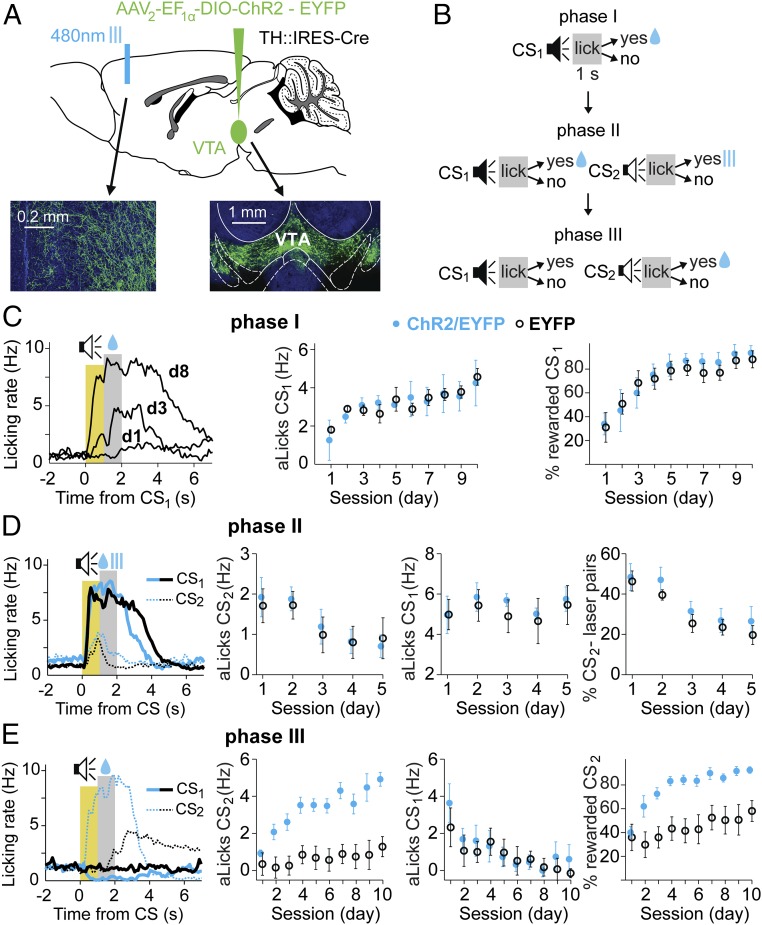Fig. 1.
Optogenetic stimulation of DA axons in mPFC had no immediate effect on licking, but facilitated subsequent learning for the DA-paired stimulus. (A) Schematic diagram showing injection of TH-Cre mice with either DIO-ChR2-EYFP or DIO-EYFP constructs in VTA, and bilateral placement of optic fibers in mPFC. (Insets) Coronal sections with DAPI nuclear staining (blue) and EYFP expression (green). VTA axons in mPFC (Left) and VTA (Right) are shown. (B) Three-phase training protocol. Phase I: Mice were conditioned to lick at the end of a tone for water rewards (CS1, 1 s; reward period, 1 s). Phase II: A new tone (CS2) was introduced, and licking within the 1-s period following CS2 resulted in optical stimulation of VTA fibers in mPFC. Phase III: The tone and water association was switched from CS1 to CS2. (C, Left) Learning in phase I: progression of licking rate in response to CS1 on d1, d3, and d8 in the same mouse. The yellow area is the duration of CS1 and anticipatory behavior (aLicks), and the gray area is the reward period. Progression of aLicks (C, Middle) and the percentage of rewarded CS1 (C, Right) are shown, plotted as mean ± SEM for the experimental (ChR2/EYFP, solid blue circles; n = 5 mice) and control (EYFP, black circles; n = 7 mice) groups. No significant difference was found between the two groups [percentage of rewarded CS1, F(1,10) = 1.8, P = 0.4; aLicks F(1,10) = 4.2, P = 0.2]. (D) Data from phase II in the same mice as in phase I. (Left to Right) Example of licking responses to CS1 (thick lines) and CS2 (thin dotted lines) for experimental (blue) and control (black) mice; development of aLicks for CS2, CS1, and percentage of CS2-laser pairs across sessions (mean ± SEM). Note similar extinction of CS2 aLicks, and percentage of CS2-laser pairs in the two groups [F(1,10) = 4.1 and 1.2, P = 0.2 and P = 0.3, respectively]. (E) Data from phase III. (Left to Right) Example of licking behavior for experimental and control mice (same as in D); aLicks for CS2, CS1, and percentage of rewarded CS2 (mean ± SEM across days, color-coded as in D). Note the faster acquisition of aLicks and higher percentage of rewarded CS2 in the ChR2/EYFP group.

